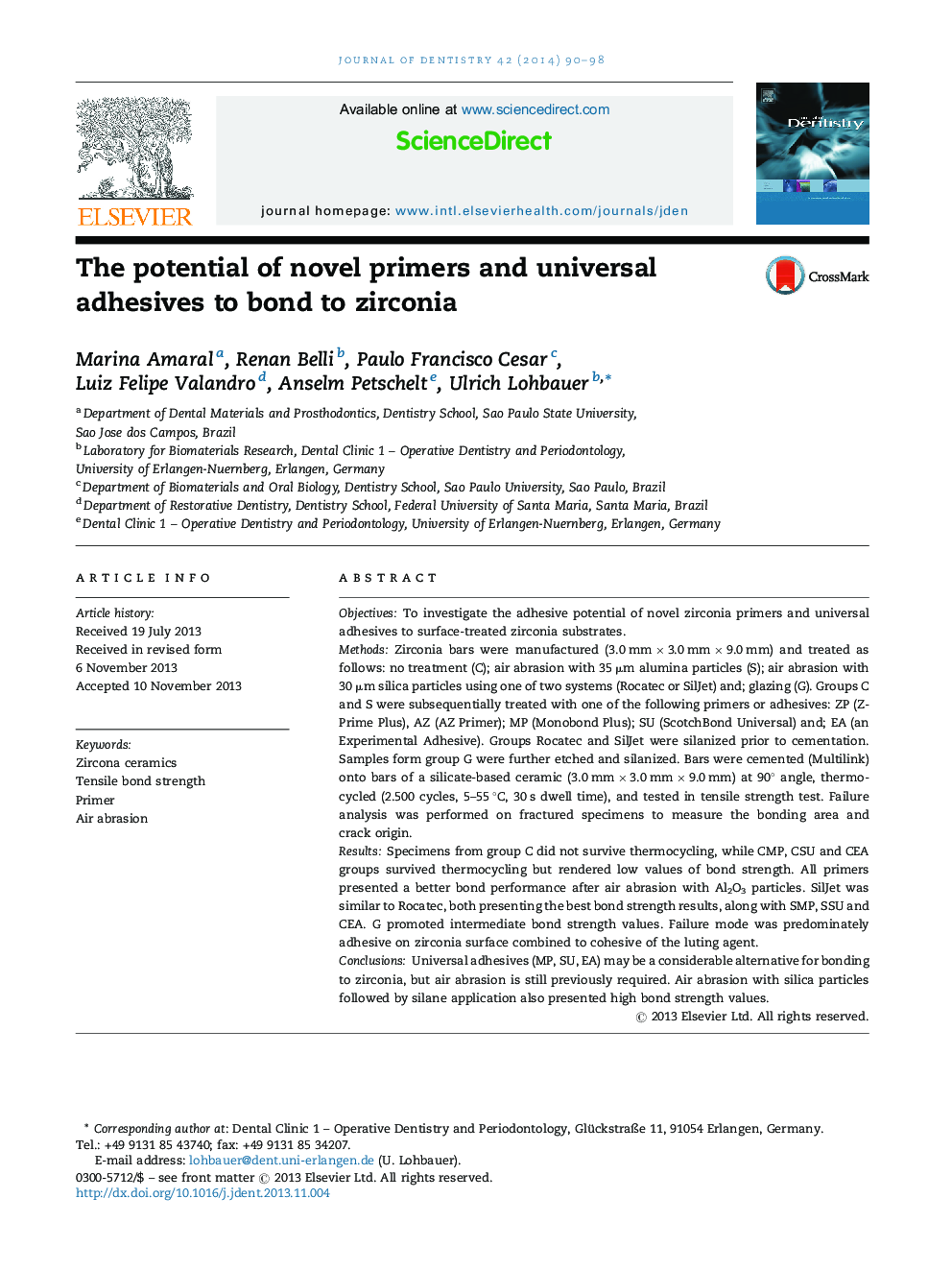| Article ID | Journal | Published Year | Pages | File Type |
|---|---|---|---|---|
| 3145066 | Journal of Dentistry | 2014 | 9 Pages |
ObjectivesTo investigate the adhesive potential of novel zirconia primers and universal adhesives to surface-treated zirconia substrates.MethodsZirconia bars were manufactured (3.0 mm × 3.0 mm × 9.0 mm) and treated as follows: no treatment (C); air abrasion with 35 μm alumina particles (S); air abrasion with 30 μm silica particles using one of two systems (Rocatec or SilJet) and; glazing (G). Groups C and S were subsequentially treated with one of the following primers or adhesives: ZP (Z-Prime Plus), AZ (AZ Primer); MP (Monobond Plus); SU (ScotchBond Universal) and; EA (an Experimental Adhesive). Groups Rocatec and SilJet were silanized prior to cementation. Samples form group G were further etched and silanized. Bars were cemented (Multilink) onto bars of a silicate-based ceramic (3.0 mm × 3.0 mm × 9.0 mm) at 90° angle, thermocycled (2.500 cycles, 5–55 °C, 30 s dwell time), and tested in tensile strength test. Failure analysis was performed on fractured specimens to measure the bonding area and crack origin.ResultsSpecimens from group C did not survive thermocycling, while CMP, CSU and CEA groups survived thermocycling but rendered low values of bond strength. All primers presented a better bond performance after air abrasion with Al2O3 particles. SilJet was similar to Rocatec, both presenting the best bond strength results, along with SMP, SSU and CEA. G promoted intermediate bond strength values. Failure mode was predominately adhesive on zirconia surface combined to cohesive of the luting agent.ConclusionsUniversal adhesives (MP, SU, EA) may be a considerable alternative for bonding to zirconia, but air abrasion is still previously required. Air abrasion with silica particles followed by silane application also presented high bond strength values.
